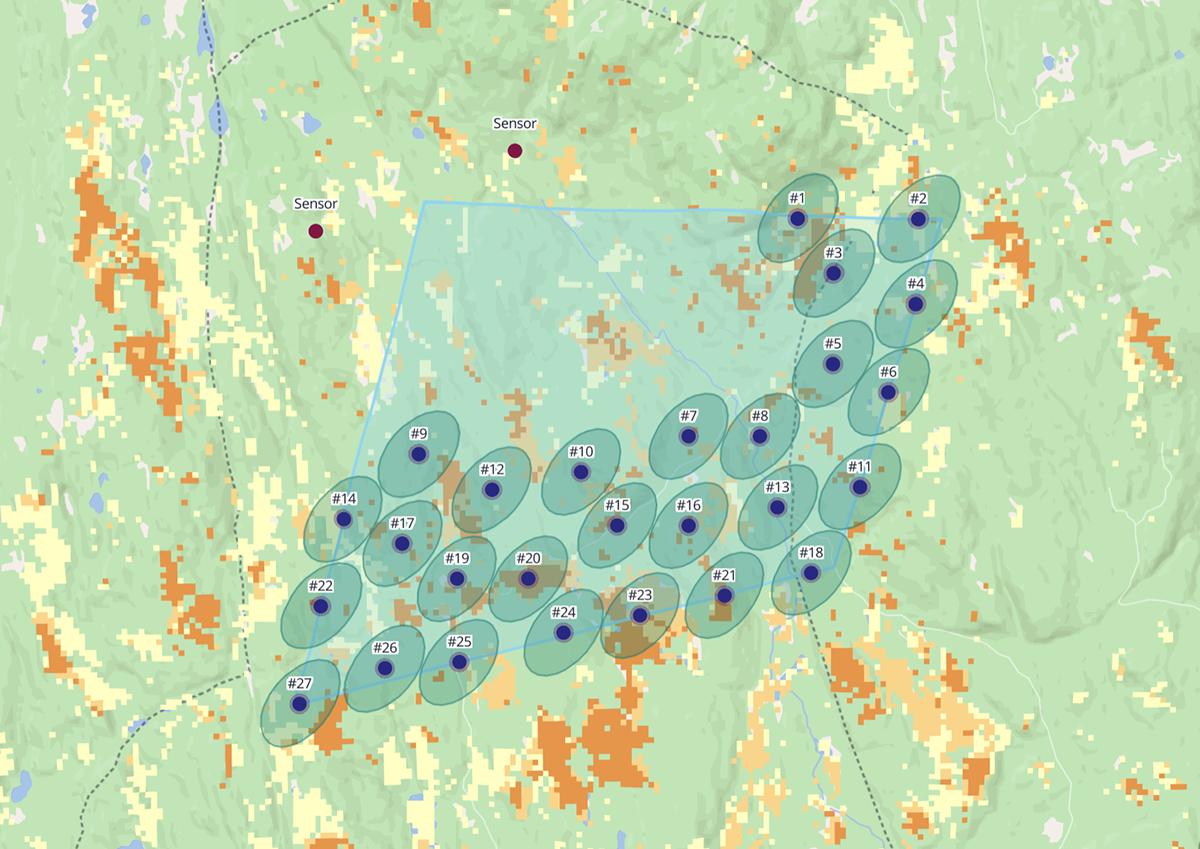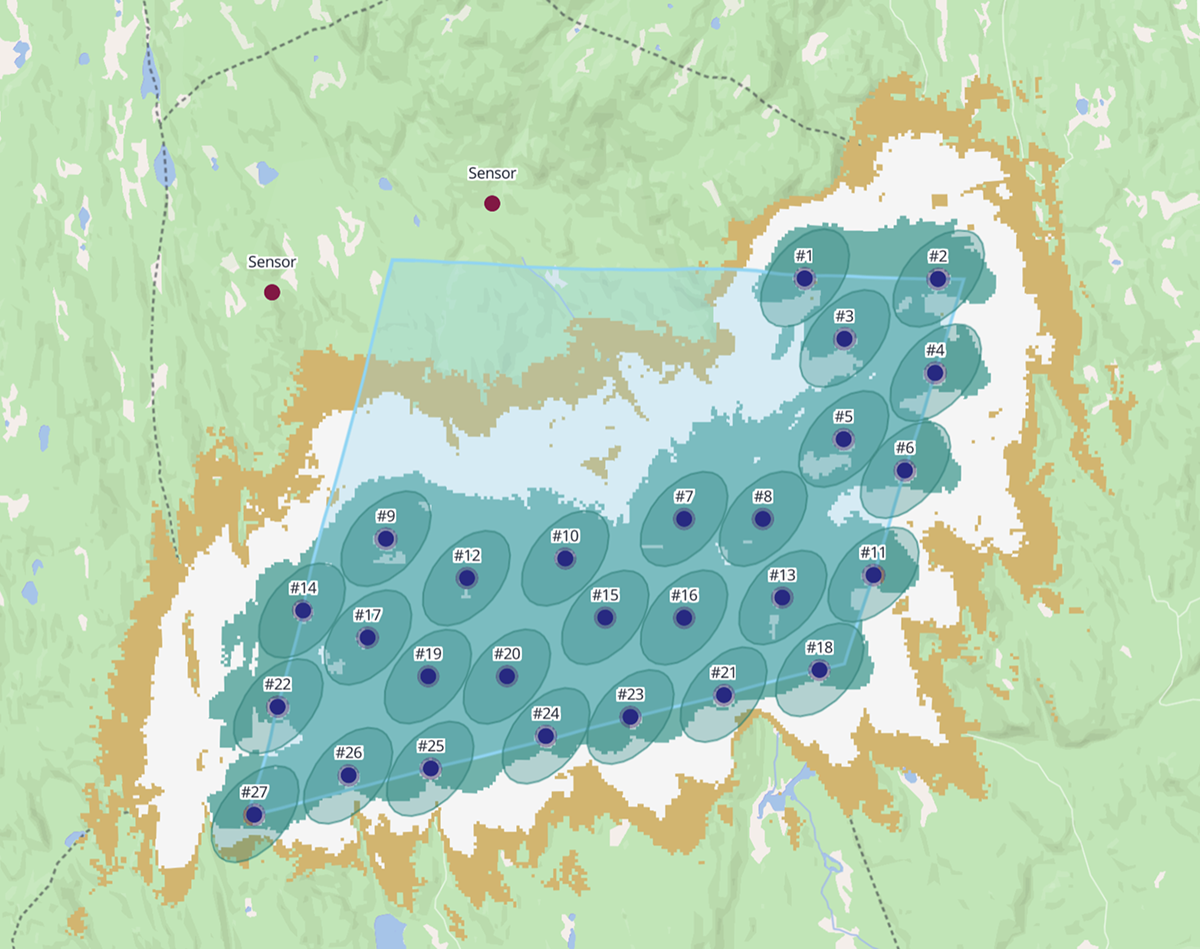Optimising wind projects for local communities and regulatory constraints with new digital tools

How does your wind park design impact the surrounding environment and the people living there? Onshore and offshore, digital tools make it much faster to identify suitable sites, spot constraints and optimise designs to meet regulatory requirements and stakeholder expectations (alongside maximising technical and financial project performance, of course). In Vind AI, we combine data, advanced optimisation algorithms and intuitive visualisations for wind projects that have what it takes to actually be built.
With traditional ways of working, integrating local impact factors like noise, view and environmental footprint into project assessment and design is time-consuming and expensive. The extensive data collection, detailed analysis and in-depth engagement required to meet stakeholder expectations (and regulatory requirements) is also often separated from core project development activities in a siloed workstream.
As a result, wind developers often integrate local impacts on the environment and people down the line of the project development process. This means showstoppers are only flagged after substantial time has already been spent on the project—and even where any local impact issues could have been resolved with smart design decisions, you may discover this too late to make the necessary project changes.
The latest technology makes it possible to work differently. In Vind AI, you can access data and analysis on local impact aspects much faster. Where constraints exist, advanced algorithms can optimise designs accordingly from the start, seamlessly integrated in core project processes. The result? You can spend more time on project opportunities that can actually become real on-the-ground wind farms.
Extensive data is the foundation for designing wind projects that meet local impact requirements and expectations. Vind AI incorporates more than 6000 built-in data layers, including data on protected areas, ship traffic and existing infrastructure.
Vårgrønn is one of the developers using Vind AI’s large collection of built-in data layers to easily integrate an extensive range of sustainability factors sufficiently early in the design process that they gain a real influence on the project design.
Based on the data layers, digital tools can flag promising project sites by considering feasibility constraints at superspeed.
Vind AI identifies technically appealing wind project locations by analysing a range of factors, including environmental considerations like biodiverse areas, and local impact considerations like noise, shadows and park visibility.
Once possible project sites are identified, developers can dive into more detailed analyses across each factor for the specific site and project.

Noise: In Vind AI, the noise analysis feature simulates noise emissions from wind turbines, including any neighbouring wind farms, as well as other relevant noise sources in the park's proximity. Based on the ISO-9613 standard, the analysis offers multiple configuration options so you can customise the simulation to your specific location. (We also support multiple operating modes on turbines).

Park visibility: The viewshed analysis in Vind AI shows where planned wind turbines will be visible from ground level—and you can get a 3D view of the park from any location. For next-level visualisations, our photo montage function makes it possible to create a realistic image of your turbines in their planned physical location in minutes.

Shadow flicker: Use the shadow flicker analysis to quickly understand which areas are most affected by the shadows from your wind turbines, and how extensively they are impacted.
Where constraints exist, advanced algorithms can optimise your design to resolve them, so you can know earlier whether compliant designs are technically and financially feasible.
The advanced wind energy yield assessments in Vind AI optimise the curtailment strategy to meet noise regulations. Our wind park layout optimisation feature can also take noise constraints into account.
Once you have designed a project that works for local environments and people, you want to communicate that clearly to stakeholders to get their buy-in and support.
Deep Wind Offshore and Groupe Valorem used Vind AI when working on getting approvals for the Environmental Impact Assessment (EIA) program for the Tuul Energy Offshore Wind Farm, set to become one of the largest offshore wind farms in the Baltic region. “While developing the program and preparing for public hearings, Vind AI enabled us to visualise the project and decide how to best present different environmental aspects and technical scenarios to local stakeholders”, says Hans H. Marki, EIA Advisor at Deep Wind Offshore.
With Vind AI, it’s easier to design wind projects that work not only for the developers but also the environment and local communities. By combining data, analysis and optimisation in one intuitive platform, Vind AI helps developers spend less time on data gathering and analysis iterations, and more time on developing feasible, compliant projects. You get quicker access to all relevant data, smarter optimisation tools to handle local constraints, and a clear way to demonstrate that your design meets environmental and stakeholder expectations.
Projects that consider local impacts from the start are not only easier to permit, they also help strengthen public and political trust in wind power. With transparent, data-driven decisions and clear visualisations, developers can show how new wind parks fit into their surroundings and contribute to the energy transition in a responsible way.
Reach out to us or request a demo to try out Vind AI for yourself!
Please reach out if you are interested in seeing a demo, asking a question or sharing feedback.